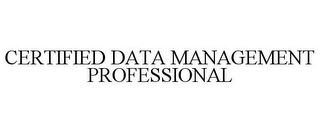
Seems better to avoid testing this distinction and prompting your opponent to move for sanctions. It is arguable that use of a mark in a HTML source keyword meta tag should not be infringement, since search engines probably ignore it and customers can’t normally see it, but sometimes a court says it is.
Enterprise Warehousing Solutions, Inc. (EWS), a test prep company, proceeded to test this distinction, whether intentionally or not.
Data Management Association International (“DAMA-I”), an exam and certification provider, sued EWS for trademark infringement. One of the certifications DAMA-I provides is the Certified Data Management Professional (“CDMP”) certification. To obtain the certification, a person must pass the Data Management Fundamentals Exam.
DAMA-I alleged that EWS was inappropriately using DAMA-I’s trademarks on EWS’s website and social media accounts when promoting its test prep course. The court entered a preliminary injunction against EWS. However, the court recognized the need, under nominative fair use, for EWS to use certain DAMA-I marks in a limited matter to describe EWS’s exam preparation course. Therefore the injunction allowed EWS to use certain of DAMA-I’s mark up to five times on any web page.
DAMA-I found that EWS was using DAMA-I marks in EWS’s website source code, which was not visible on the rendered web pages. By counting the use of the marks in the source code, DAMA-I assert EWS exceeded the prohibition on using DAMA-I’s marks more than five time on any web page.
But earlier in briefing on the preliminary injunction motion the parties did not address use of marks in HTML source code or metatags. Instead they focused on the content on EWS’s web pages. The court found that “Nowhere in the preliminary injunction order did the Court mention marks invisible to the consumer.” So the court found that the use of marks in HTML source code (which was not visible when the webpage was normally displayed) fell outside of the scope of the preliminary injunction.
This could have gone the other way. So, check for any source code use of third marks that are not visible on the rendered webpage. And the conservative route is to remove those uses.
Cite: Data Mgmt. Ass’n Int’l v. Enter. Warehousing Sols., Inc, No. 20 C 04711, 2022 U.S. Dist. LEXIS 204942 (N.D. Ill. Nov. 10, 2022).